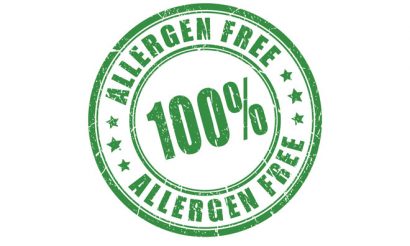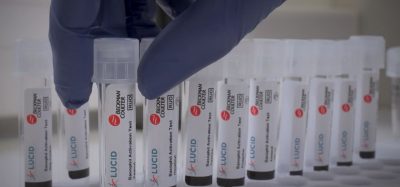Making sense of allergens; a confusing path from product to consumer
- Like
- Digg
- Del
- Tumblr
- VKontakte
- Buffer
- Love This
- Odnoklassniki
- Meneame
- Blogger
- Amazon
- Yahoo Mail
- Gmail
- AOL
- Newsvine
- HackerNews
- Evernote
- MySpace
- Mail.ru
- Viadeo
- Line
- Comments
- Yummly
- SMS
- Viber
- Telegram
- Subscribe
- Skype
- Facebook Messenger
- Kakao
- LiveJournal
- Yammer
- Edgar
- Fintel
- Mix
- Instapaper
- Copy Link
Posted: 14 October 2016 | Ioana Lock | No comments yet
The incidence of food allergy reporting is increasing and the cause can be multifactorial but is generally still fundamentally unknown. It is suspected that genetic and environmental factors may have an increasing impact on allergy occurrence. The world of food allergens is mostly misunderstood by consumers and food producers, which may lead to further confusion. Clarification of allergens and a benchmark for comparison to measure the prevalence and potential health implications is urgently required, including frequent myth debunking to avoid misguiding consumers.


There is currently a gap in reliable data and statistics on the actual prevalence of food allergies and intolerance to food components, as previous attempts to establish definitive figures have not been representative of whole populations and have tended to be based on subgroups within a given population, such as children. Additionally, reported data have, in past studies, been presented without clear objective diagnoses. The current figures indicate that some 30-35% of people at some stage in their lives have a food allergy and the incidence of this is steadily increasing in countries undergoing industrial development1.
A food allergy causes a reaction of the body’s immune system, which leads to a mild or severe reaction often mediated through an immune system response to produce an antibody (IgE) or a sudden release of histamine with rapid onset of symptoms, or potentially fatal reactions, such as anaphylaxis. Symptoms can include an itching sensation; obstruction of airways and vomiting; or gastrointestinal problems. All of these symptoms can occur immediately after ingesting the food component.


A food intolerance is often characterised by an intolerance to several foods within a food group. However, symptoms can be diverse and therefore difficult to identify and treat. Intolerance can cause diarrhoea, bloating and intestinal cramps, and often milder symptoms of a food allergy; remedial action may be avoidance of suspect food substances. Furthermore, a food intolerance is not normally life threatening2.
The EU has recognised 14 food allergens, which are as follows: gluten, crustaceans, eggs, fish, peanuts (ground nuts), soybeans, milk, tree nuts (including: almonds, hazelnuts, walnuts, cashews, pecan nuts, Brazil nuts, pistachio nuts, macadamia), celery (including celeriac), mustard, sesame, sulphites, lupin and molluscs3.
The FDA in the United States of America recognises eight food allergens: milk, eggs, fish, crustaceans, tree nuts, peanuts, wheat and soy4. Given this difference in acknowledgement of allergens, the danger of people travelling abroad and being unaware that their allergy is not recognised – and therefore potentially not being declared on food products – becomes obvious.
This list is not definitive as the human body can develop an allergy or intolerance towards any foodstuff at any point in their lifespan. With such clear definitions it is still incredibly surprising how much misinformation can be found on the Internet when searching for answers on allergens. This in itself can lead to further confusion in the general population.
Webpages populated by ‘health experts’ often advocate that, on the basis of allergen advice, even non-sufferers should remove certain foods from their diet, suggesting that allergens have more wide ranging adverse health effects than they actually do. As an example of ill-informed advice, it has been stated that gluten can inhibit the intake of vitamins and minerals and therefore a gluten free lifestyle increases that intake of nutrients and makes the body healthier5. It is clear that this ill-informed ‘health advice’ can indeed be incorrect but in some cases may be dangerous. It is true to state that gluten has this effect on a small percentage of people suffering from coeliac disease, but in a non-sufferer no such correlation has been shown.
Even more disturbing are the claims of others that some foods can cure the allergies or intolerance. Interestingly, eating apples that contain flavonoids, which in turn protect the cell walls and inhibit the release of histamines, supposedly protect the gut from allergens6. Such advice has no scientific or medical validity. As the saying goes, “an apple a day keeps the doctor away”, but in this case (yet again) no scientific evidence exists that apples have this effect at all. This advice would not be recommended as a definitive ‘cure’ for such allergies.
The misinformation from the health gurus that avoiding allergens can be beneficial beyond the primary aim of avoiding an allergic reaction can be highly dangerous if followed without first seeking medical advice. Simply put, there is a lack of understanding about what a food allergen actually does and how the body reacts to it. Avoiding an allergen does not mean a person can remain healthy; it is the nutritional content of a food product that determines the wider health benefits. People following this sort of advice may ultimately create a more damaging scenario for themselves.


It has to be stated, though, that an increase in scientific research is currently focused on reducing the allergic response of patients by exposing them gradually to the allergens, which is known as allergen immunotherapy, or desensitisation therapy. The allergen sufferer is subjected to the allergen at first in micro doses, gradually building up to strengthen the immune system and thereby increasing the tolerance level, potentially reducing the risk for anaphylaxis in sufferers7 . People suffering from a defined food allergy usually know which food products to avoid. However, people suffering from an intolerance can suddenly be faced with a large amount of conflicting advice. Allergies tend to manifest themselves in childhood and across all ethnicities, but can develop at any time during a person’s lifespan – this is particularly true for intolerances to particular food groups. People suffering from an allergy know what is safe to eat. Previously, this would have meant for a sufferer a restrictive diet and a repetitive choice in meals.
Big food businesses have identified a gap in the market and now allergen sufferers can buy a whole new range of ‘free-from’ products, expanding their choice. Supermarkets across the country have designated isles making the choice easy. Additionally, consumers are now able to identify allergens more quickly and easily in products, due to the change in labelling (EU FIC 2014), whereby allergens must be labelled in bold type-face8. Restaurants have also reacted to the need to offer food choices suitable for allergen sufferers. These choices are often clearly marked on the menu or promoted in advertising to entice more customers. However, the issue here is that although the management of a premises has made the choice to offer allergen free dishes, this does not automatically mean the people preparing the food fully understand the risks. Cross contamination can easily occur when these free-from foods are prepared in the same manner as regular dishes, using the same utensils and equipment. Everybody who has been in or seen a busy working kitchen knows that it can be more of an inconvenience to clean down a work area or, for lack of space, even have a designated area for special preparation of allergen-free food. The smallest trace of an allergen can cause a severe reaction to susceptible people, potentially leading to life threatening situations. Reputations of restaurants can be destroyed in a matter of one such incidence, should a customer react to one of their dishes.
The only effective way of ensuring that no allergens are present is not to use them at all in the production of their food. However, this means food producers having to fully trust suppliers whom, in turn, must have full confidence in the origin of the procurement of their goods. The increase in the sourcing of raw materials from outside the EU has a further negative impact on the trust food producers put into their final product. This is not to say that materials imported from outside the EU are ‘bad’, but differences in culture and the unawareness of producers regarding allergens can lead to unsafe products. It all comes down to the possibility of cross contamination and potentially false labelling. It should be remembered that there is a risk of food adulteration and food fraud; exchanging or substituting an ingredient for a cheaper substitute product that may contain an allergenic component. Food fraud is most often economically motivated, or the attempt to reap more money out of the food industry; a simple cost cutting exercise that may have severe consequences on the health of consumers.
As a result of all such considerations, food testing laboratories around the country are seeing an increase in requests to test their finished products for allergens, or even the ingredients, directly. A huge number of analytical tests are available that range from rapid testing – detecting the presence or absence – to more complex methods that will quantify the allergen present. A food producer sending in a new raw material for testing, or a ready-to-eat product, relies on the laboratories to produce accurate results and give a guarantee that their food will be safe for consumption. There are some issues, however, with food testing that are often not understood by the businesses. Some food matrixes are extremely complex when it comes to analysis, requiring complex methods in preparation for analytical determination. Every scientist who has ever tried to analyse a chocolate-based product for allergens will be able to tell you how difficult it is to determine accurate results. Often the use of ready-to-go rapid analytical kits have been verified by manufacturers, however concerns remain that they may produce false positives or false negative results. A significant issue lies in the lack of reference materials and methods that should be of an international standard and quantifiable, guaranteeing that all allergen testing is carried out with a high degree of reproducibility and traceability9.
The major manufacturers in the food industry have defined HACCP plans in place to reduce or eliminate the risk of allergens entering their production lines. However, even they are aware that things can go wrong in large manufacturing facilities and factories, especially with regard to cross contamination. If, for example, the factory handles allergen containing ingredients in some areas and has allergen-free zones in another facility, there still remains a risk, whether through staff not understanding procedures or by accidental cross contamination. The option for these manufacturers is to protect themselves by placing warnings on their labels that the product may contain traces of whichever allergen, most commonly nuts.
Small or medium-sized businesses can struggle with regulations, especially if they want to produce allergen-free products. Such business owners can find it very confusing to first of all identify which foods actually contain allergens and secondly to then find suitable replacements, if required. Overall, though, the free-from market is gaining an increasing share of the market. It is then up to the consumer to decide whether to purchase these products, often based on trust in the labels and their content.
Food allergens are an issue that remains and will potentially become more of a concern for the population and the food manufacturers, whether large food industries or small medium sized businesses. In order to tackle this concern all interrelated areas of manufacturing food products need to work together in conjunction with legislative bodies to ameliorate the growing problem of food allergies.
About the author
Ioana Lock started her scientific career as a Technical Laboratory Assistant in the NoWFOOD centre at the University of Chester. She has been working predominantly with small and medium-sized businesses, testing their food products for allergens. She has also contributed to ring trials testing analytical standards for food allergens. Her first degree was in Forensic Biology and she is currently reading for her PhD in molecular biology, developing a novel aptamer for the detection of mycotoxins in food and feed.
References
- https://www.allergyuk.org/why-is-allergy-increasing/why-is-allergy-increasing
- http://www.nhs.uk/conditions/food-allergy/Pages/Intro1.aspx
- http://allergytraining.food.gov.uk/english/food-allergy-facts.aspx
- http://www.fda.gov/Food/IngredientsPackagingLabeling/FoodAllergens
- http://www.onegreenplanet.org/natural-health
- http://www.healwithfood.org/allergies/foods.php
- http://stanmed.stanford.edu/2014fall/i-can-eat-it.html
- http://www.food.gov.uk/business-industry/allergy-guide/allergen-resources#toc-4
- Walker et al., Analyst, 2016, 141,24






